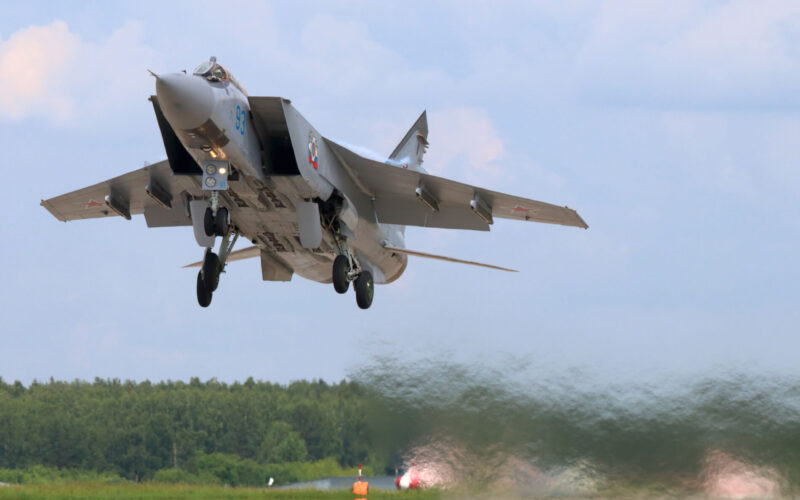A squadron of modernized Mikoyan Gurevich MiG-31BM supersonic interceptors is being deployed on the Kamchatka Peninsula, at the easternmost point of Russia bordering the Pacific Ocean. It will be tasked with controlling the airspace in an increasingly contested region.
The aircraft will be integrated into the 317th Mixed Aviation Regiment of the Pacific Fleet and will operate from the Yelizovo Air Base (PKC) situated along the southern coast of the Kamchatka Peninsula. Activated in 1960, the 317th Mixed Aviation Regiment regroups various aircraft ranging from tactical transport planes, maritime patrol planes, to helicopters and already twelve Mikoyan MiG-31BS. Kamchatka also houses the nuclear capabilities of the Russian Pacific Fleet.
Second only to the Mikoyan MiG-25 Foxbat in speed, the Mikoyan MiG-31 Foxhound entered service as a supersonic interceptor in 1981. The maximum takeoff weight of 46 tons allows it to carry a substantial array of weapons that include the Vympel R-37M (or AA-13 Axehead for NATO), a hypersonic air-to-air missile with a range exceeding 300 kilometers (186 miles).
The latest iteration, called the MiG-31BM, features a modernized cockpit with new screens and a head-up display, a radar that improves the engagement distance to 280 kilometers (173 miles) for air and surface targets, and a canopy that can sustain higher speeds. Now able to reach a top speed exceeding Mach 2.8, it will be capable of intercepting fighter jets, cruise and hypersonic missiles.
The addition of twelve Mikoyan MiG-31BM is a clear answer to the intensifying tensions within the region. “With their range and speed, interceptors will be able to control the space from the North Pole to the south-eastern borders of the country,” military historian Dmitry Boltenkov told Izvestia.
Additionally to the frequent interceptions between Russia and the United States over the Bering Sea, where the two countries are facing each other, South Korea, Japan and China have intensified their territorial defense doctrine, leading to frequent incidents over the Pacific Ocean.

